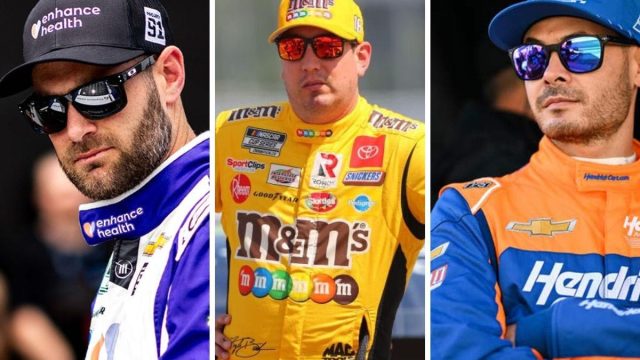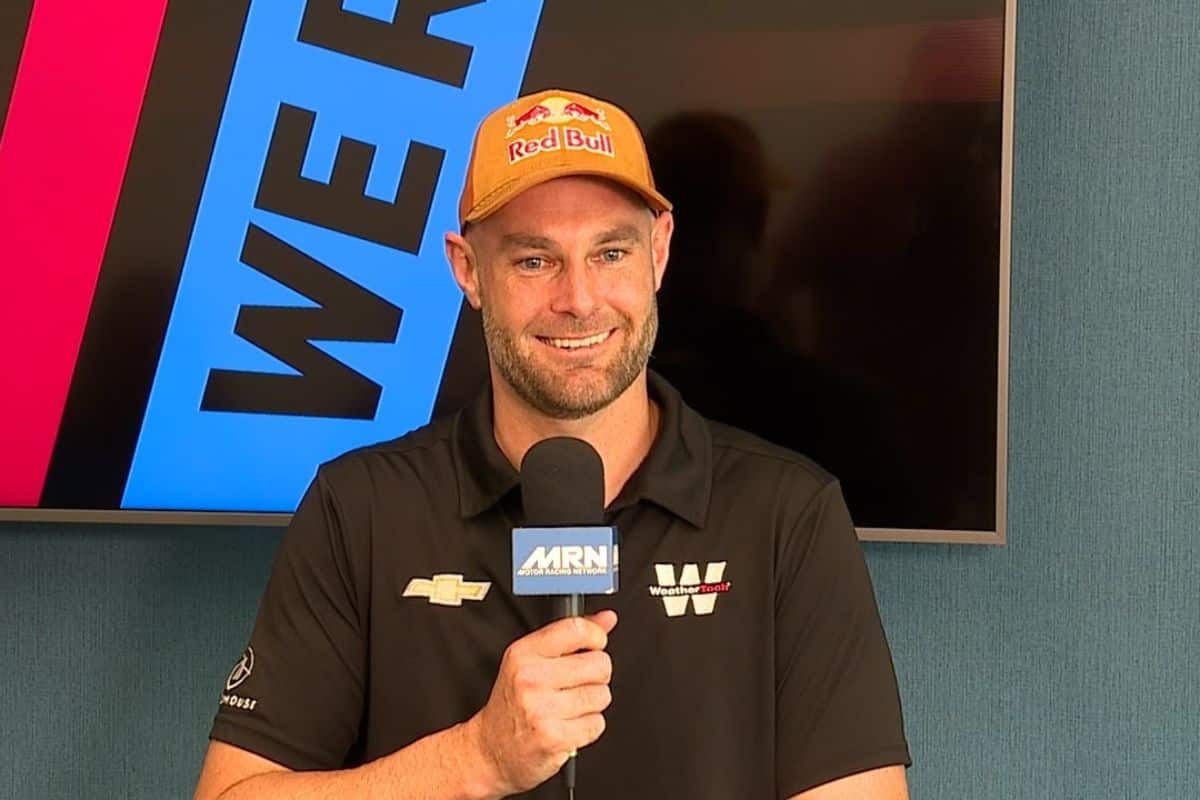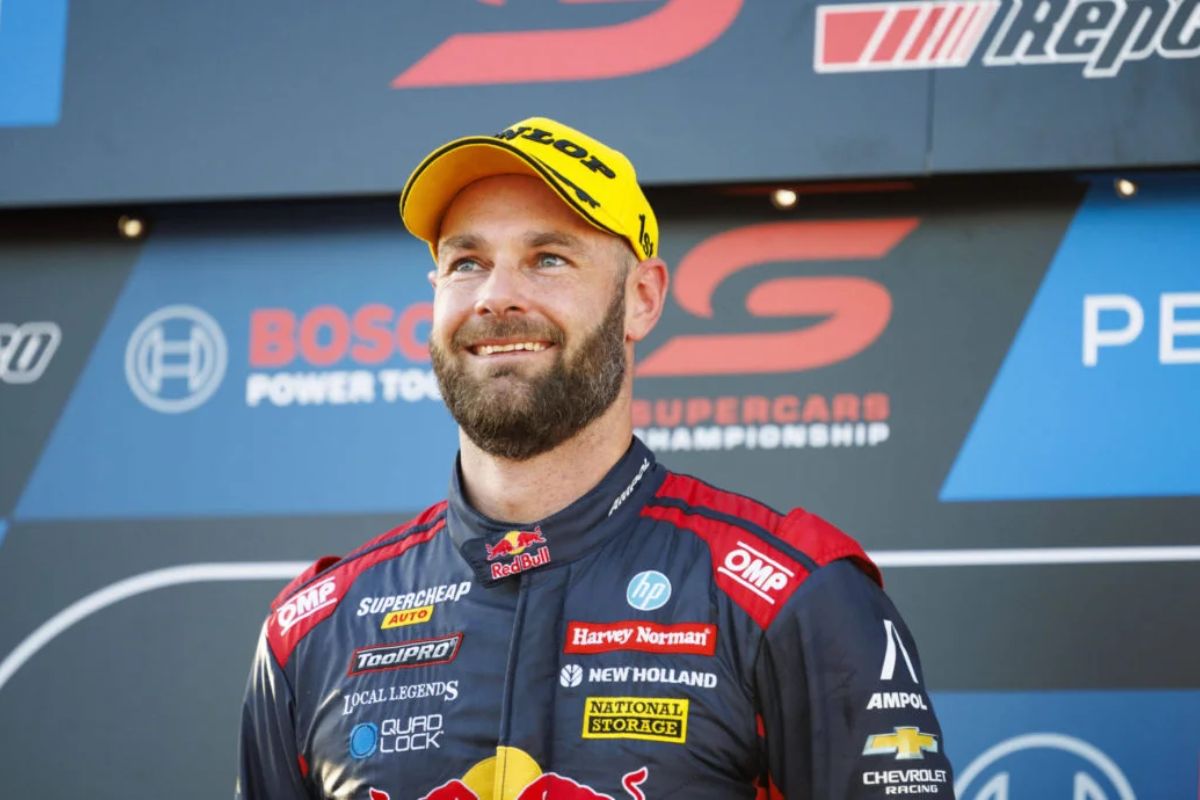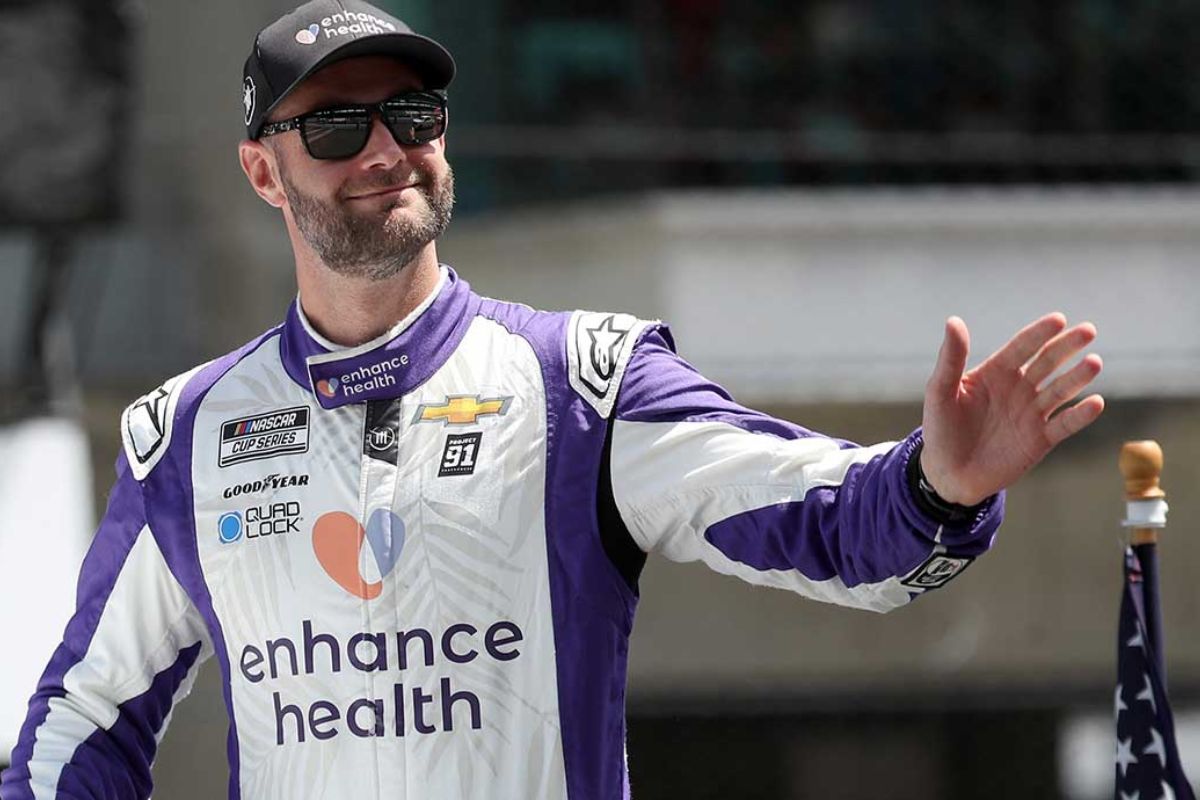SVG Contrasts Busch and Elliott’s NASCAR Emotions: In a recent discourse, Shane van Gisbergen (SVG) has intriguingly contrasted the emotional temperaments of NASCAR stalwarts Kyle Busch and Chase Elliott, positing a bold claim that these emotional variances greatly influence their racing outcomes. By highlighting the intricacies of how Busch’s aggressive fervor and Elliott’s composed resolve manifest on the racetrack, SVG highlights the critical role emotions play in high-pressure environments. This analysis prompts a deeper consideration of how emotional management might be as crucial as technical skills in shaping a driver’s strategic choices and career trajectory. How do these emotional dynamics translate into performance metrics and broader racing success?
Key Highlights
- Van Gisbergen highlights the contrasting emotional responses of Busch and Elliott in high-pressure NASCAR situations.
- SVG claims Busch’s intensity can be a double-edged sword, potentially impacting performance.
- He praises Elliott’s calm demeanor, suggesting it contributes to more consistent results.
- SVG’s insights suggest understanding emotional dynamics is crucial for NASCAR success.
- His observations underscore the importance of emotional control in competitive racing environments.
Shane van Gisbergen’s Adaptation to NASCAR Racing
Shane van Gisbergen’s smooth shift to NASCAR racing highlights his exceptional versatility and skill, transitioning from dominating the Supercars Series in Australia to securing a landmark victory in his debut race at Chicago. This shift is not merely a testament to his driving expertise but also emphasizes his ability to rapidly adapt to a vastly different racing environment.
The Supercars and NASCAR series, while both premier motorsport arenas, present unique challenges that test a driver’s adaptability and resilience.
Van Gisbergen’s success in Chicago is particularly significant, given the distinct characteristics of NASCAR vehicles compared to those in the Supercars Series. NASCAR cars are heavier, less aerodynamically sophisticated, and demand a different driving technique, particularly on oval tracks, which are a staple of the series. Despite these challenges, van Gisbergen managed to not only compete but excel, showcasing his deep understanding of race dynamics and vehicle control. His ability to quickly acclimate to the technical subtleties of NASCAR cars speaks volumes about his comprehensive skill set.
Moreover, his ongoing campaign as a rookie in the Xfinity Series further illustrates his commitment to mastering the intricacies of NASCAR racing. Competing against established drivers in a series known for its competitive nature, van Gisbergen’s presence is a formidable inclusion, raising the bar for both seasoned veterans and fellow newcomers.
SVG’s Perspective on NASCAR’s Next-Gen Car
Van Gisbergen’s distinct viewpoint on NASCAR’s Next-Gen car reveals a captivating interplay between familiarity and novelty, as he draws parallels between his Cup Series experience and the stock cars utilized in the Supercars series. This comparative analysis is insightful, particularly against the backdrop of criticism from several Cup Series drivers who have expressed reservations about the Next-Gen car. Van Gisbergen, however, perceives the shift with a detailed perspective that highlights both the similarities and distinctions between the two racing formats.
- Familiar Engineering Principles: Van Gisbergen notes that the engineering principles behind the Next-Gen car bear a remarkable resemblance to the Supercars he is accustomed to. This familiarity has allowed him to adapt more seamlessly than some of his NASCAR counterparts.
- Inventive Design Features: While the core engineering may be familiar, the Next-Gen car incorporates original design features that set it apart. These include a fully independent rear suspension and a sequential gearbox, both of which align closely with the technical specifications of Supercars.
- Driver Feedback: Van Gisbergen emphasizes that the driver feedback from the Next-Gen car is more responsive and predictable, akin to the Supercars. This characteristic is in stark contrast to the complaints from other NASCAR drivers about the car’s handling and performance inconsistencies.
- Performance Metrics: The performance metrics, such as downforce and aerodynamics, also show a convergence with Supercars. This similarity has provided Van Gisbergen with a performance baseline that aligns closely with his prior racing experience.
SVG Highlights Differences Between Cup and Xfinity Series Cars
Expanding his analysis to encompass the differences between Cup and Xfinity Series cars, SVG highlights the subtle variations that greatly impact driver experience and race dynamics. One of the primary distinctions SVG emphasizes is the contrasting handling characteristics of the two vehicles. The Gen-7 car, celebrated for bringing parity to the Cup Series, has introduced a level playing field, yet its design leads to different aerodynamic responses compared to the Xfinity car.
The Xfinity Series car, as described by Cup drivers during FOX race coverage, often receives praise for its more traditional and perhaps more predictable handling. SVG points out that the Xfinity car allows for more driver input and control, especially when maneuvering aero blocks and sliding across the track. This characteristic makes the Xfinity vehicle feel more engaging and rewarding to drive, as it demands a higher degree of skill and finesse to manage the car’s behavior under varying race conditions.
“So the Xfinity car, I’ve never driven anything like that. I’ve never driven a car that drives like a forklift, where the rear end is doing the steering. Every other car feels solid, locked-in, makes downforce in a straight line, rather than yawed out. The Cup car is relative to pretty much every other race car in the world.” – svg
Conversely, the Gen-7 Cup car’s design focuses on equalizing competition by reducing the disparities in vehicle performance across the field. While this brings about more intense and closely contested races, it also introduces a different set of dynamics where the car’s reaction to aero effects and track conditions can be less intuitive. The parity introduced by the Gen-7 car can sometimes overshadow individual driving skills, as the machinery’s limitations and standardized features play a significant role in determining race outcomes.
“Xfinity car, it slides. I don’t know if it’s the (differential) moving or the air doing its thing, or the car is actually sliding. Like there are just so many features and feelings I’ve never felt before. And whenever I’ve spoken to people like Kyle Busch or Chase Elliott, they’re like, “Man, it’s the opposite for us. We love that feeling where it feels like the car is sitting and yawing.” – svg
SVG’s Ambitions in NASCAR
In articulating his future goals, SVG outlines a clear path for his growing NASCAR career, emphasizing not just victories but also his desire to master the complexities of both the Cup and Xfinity Series. The New Zealander, already a respected name in the motorsports world, is setting his sights on a holistic improvement within NASCAR, highlighting his dedication to not just participating, but excelling at every level.
SVG’s ambitions are multifaceted and carefully planned, reflecting a strategic approach aimed at long-term success.
- Skill Improvement: SVG aims to hone his driving skills to adapt to the subtle differences between the Cup and Xfinity Series cars. He understands that a thorough grasp of vehicle dynamics is pivotal for consistent performance.
- Tactical Mastery: Beyond raw driving talent, SVG places a high value on race strategy. He is eager to understand the strategic elements that can make or break a race, such as pit stops, tire management, and fuel conservation.
- Team Collaboration: Recognizing that success in NASCAR is not a solo endeavor, SVG is focused on building strong relationships with his team. He emphasizes communication and teamwork to make sure that every race is a unified effort.
- Reliability and Resilience: SVG’s ambition extends to maintaining a high level of performance throughout the season. He aims to develop the mental strength necessary to navigate the peaks and valleys of competitive racing.
SVG Aims for Oval Racing Success
Determined to expand his skills beyond road circuits, SVG is now setting his sights on achieving victory in the highly competitive arena of oval racing. The Kiwi speedster, celebrated for his expertise in road course events, is not satisfied with merely excelling in one domain. His recent successes at the Chicago Street Race, Portland, and Sonoma in the Xfinity Series have solidified his reputation, but SVG’s ambitions stretch further.
Analyzing SVG’s evolution, it is evident that his strategic vision encompasses a broader mastery of NASCAR’s diverse racing formats. While road circuits offer unique challenges with their intricate turns and varied terrain, oval tracks demand an entirely different skill set, emphasizing sustained high-speed performance, precise drafting techniques, and split-second decision-making in tightly packed fields. These subtleties are not lost on SVG, who recognizes that excelling on ovals could cement his legacy as a versatile and formidable driver.
“Probably to win on an oval. I just know it’s gonna take time and I’m not there yet, but it’s a pretty big thing to work toward.” – svg
SVG’s pursuit of oval racing success is a personal ambition and calculated move to diversify his competitive edge. NASCAR’s calendar is full of road circuit events, presenting ample opportunities for him to dominate, yet SVG’s decision to tackle oval racing highlights his desire to be a well-rounded competitor. This shift also reflects his understanding of the NASCAR landscape, where proficiency on ovals is crucial for championship contention.
News in Brief: SVG Contrasts Busch and Elliott’s NASCAR Emotions
Shane van Gisbergen’s analysis of the emotional dynamics between drivers Busch and Elliott highlights the critical role that emotional management plays in NASCAR racing. By contrasting their approaches, SVG illuminates how emotional regulation can influence performance, strategic decisions, and general success in high-stakes environments.
Such insights emphasize the necessity for drivers to master their emotional responses, ultimately impacting their competitive edge and career longevity within the sport.
ALSO READ: Shane Van Gisbergen Shakes up NASCAR’s Road Course Hierarchy



